15 Places to Visit in Uttar Pradesh: Discover the Enchanting Beauty of Uttar Pradesh
Places to Visit in Uttar Pradesh: Are you ready to embark on a mesmerizing journey through the emotional state of Uttar Pradesh? Situated in the heart of North India, Uttar Pradesh is filled with rich cultural heritage, awe-inspiring architectural wonders, and captivating natural beauty. From the holy city of Varanasi to the majestic Taj Mahal in Agra, this state offers many experiences that will leave you spellbound. In this article, we will delve into the 15 must-visit places in Uttar Pradesh where you can immerse yourself in the essence of this enchanting region.

Places to Visit in Uttar Pradesh
15 Places to Visit in Uttar Pradesh
Uttar Pradesh has numerous remarkable destinations catering to various interests, ranging from spirituality and history to nature and adventure. Let’s dive into the top 14 places to visit in Uttar Pradesh, each offering a unique and unforgettable experience.
1. Varanasi: The Spiritual Capital of India
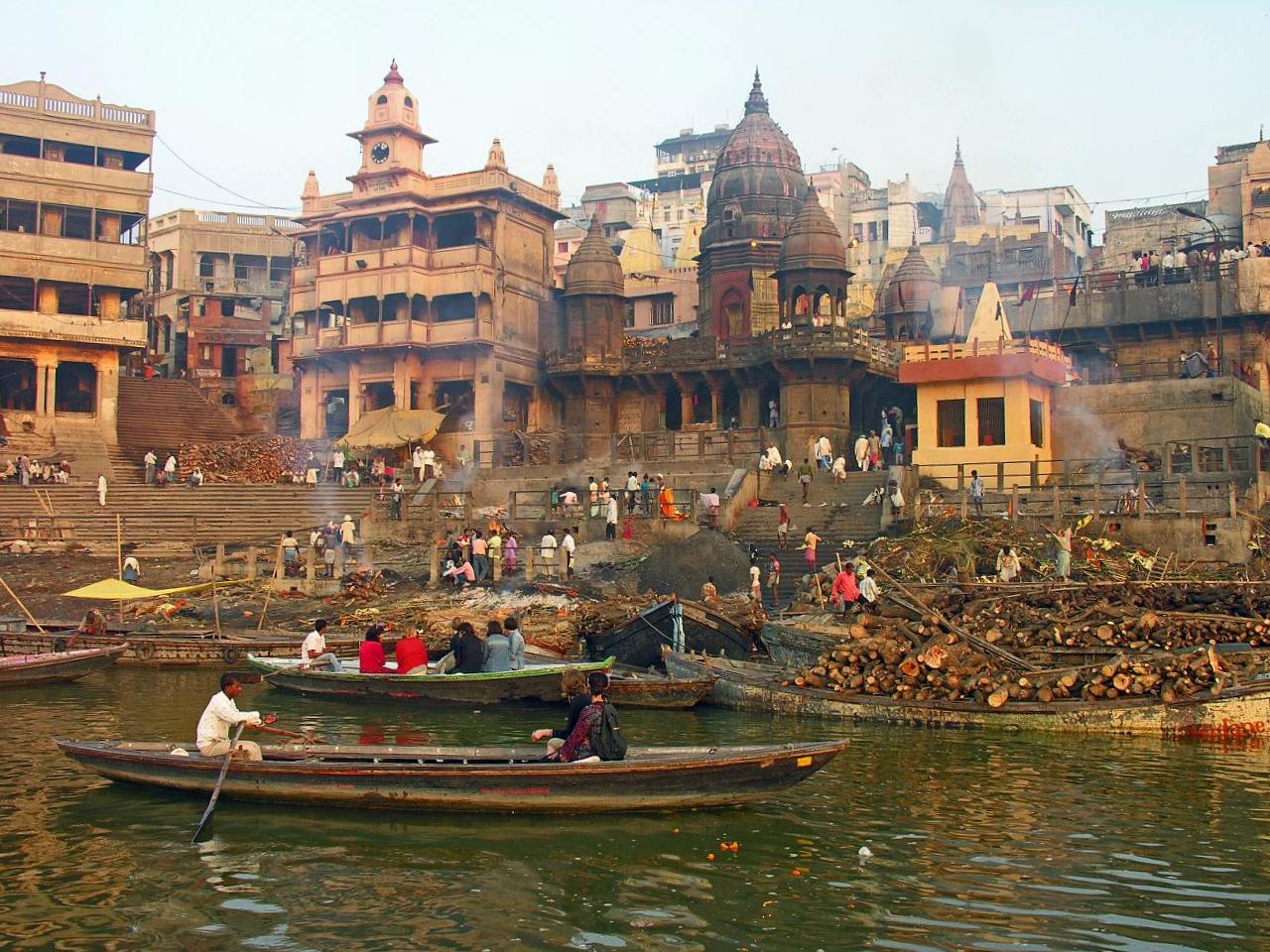
Varanasi, also known as Benares or Kashi, is a city of profound spiritual significance and is hailed as the “Spiritual Capital of India.” Nestled on the banks of the sacred River Ganges in the Indian state of Uttar Pradesh, Varanasi is one of the oldest continuously inhabited cities in the world. Consequently, it holds a special place in the hearts of millions of pilgrims and seekers of spiritual enlightenment.
The city is believed to be the abode of Lord Shiva, one of the principal deities in Hinduism. It is said that Lord Shiva himself established Varanasi as a sacred place, making it a destination for those seeking liberation from the cycle of birth and death. Varanasi is regarded as a gateway to Moksha, the ultimate freedom of the soul.
The Ghats, a series of steps leading down to the holy River Ganges, are the lifeline of Varanasi and form an integral part of its spiritual essence. Devotees from all walks of life gather here to perform sacred rituals, offer prayers, and take ritual baths in the purifying waters of the Ganges. The Dashashwamedh Ghat, the most prominent and bustling ghat, is renowned for its grand evening Aarti ceremony, where lamps are lit, prayers are chanted, and devotional songs fill the air, creating an enchanting and spiritually uplifting ambiance.
Varanasi is also home to numerous ancient temples dedicated to various Hindu mythology deities. For example, the Kashi Vishwanath Temple, dedicated to Lord Shiva, holds immense significance and is visited by devotees worldwide. The temple complex is a splendid example of intricate architecture and devotion, and its sanctum is believed to house one of the twelve Jyotirlingas, considered highly sacred in Hinduism.
Walking through the narrow lanes of Varanasi’s old city, one can witness a tapestry of vibrant colors, bustling markets, and the constant interplay of spirituality and everyday life. The city is renowned for its cultural heritage, music, and art. The Banaras Hindu University, one of the largest residential universities in Asia, is a center of education and research and plays a vital role in promoting art, culture, and literature.
The city of Varanasi is not limited to Hindu spirituality alone. It is also a sacred place for Buddhists, as it is believed to be where Gautama Buddha gave his first sermon after enlightenment at nearby Sarnath. In addition, the Dhamek Stupa and the Sarnath Archaeological Museum are significant attractions for those seeking Buddhist heritage and history.
Varanasi is a city that resonates with deep spiritual energy, offering a profound experience of introspection, devotion, and self-discovery. Its timeless charm, mystical aura, and belief in the continuity of life and death make it a magnet for spiritual seekers and those longing to understand the more profound mysteries of existence.
Visiting Varanasi immerses oneself in the rituals, traditions, and spirituality woven into its fabric for centuries. It is a journey of self-reflection, where the ancient and the modern coexist, and the boundaries between the material and the divine blur. Varanasi beckons those who seek solace, enlightenment, and a profound connection with the eternal flow of life.
2. Agra: The Majestic Abode of the Taj Mahal

Agra is a city steeped in history and architectural grandeur. It is most renowned as the majestic abode of the Taj Mahal, one of the Seven Wonders of the World, and an iconic symbol of love and beauty.
The Taj Mahal, a UNESCO World Heritage Site, stands as a testament to the eternal love of Emperor Shah Jahan for his beloved wife, Mumtaz Mahal. This magnificent mausoleum, built in the 17th century, is an architectural masterpiece crafted from white marble and adorned with intricate carvings, inlay work, and precious gemstones. The Taj Mahal’s ethereal beauty is best experienced during sunrise and sunset when the soft golden light reflects off its pristine facade, creating a mesmerizing spectacle.
Beyond the Taj Mahal, Agra boasts several other architectural wonders that showcase the city’s rich historical legacy. The Agra Fort, a UNESCO World Heritage Site, is a massive fortification built during the Mughal era. Its red sandstone walls enclose palaces, mosques, gardens, and halls that offer a glimpse into the opulence and grandeur of the Mughal Empire. The fort also provides breathtaking views of the Taj Mahal from its vantage points.
Another notable attraction is Fatehpur Sikri, a ghost city on Agra’s outskirts. Built by Emperor Akbar, this abandoned capital of the Mughal Empire showcases a blend of architectural styles and reflects Akbar’s vision of religious harmony. The Buland Darwaza, a massive gateway at Fatehpur Sikri, symbolizes victory and a marvel of Mughal architecture.
Agra is also famous for its rich arts and crafts tradition. The city is known for its exquisite marble inlay work, leather goods, and intricate embroidery. Exploring the bustling markets of Agra, such as Sadar Bazaar and Kinari Bazaar, offers a chance to witness the skilled artisans at work and acquire unique handicrafts as souvenirs.
Culinary delights also await in Agra, with the city offering a range of mouthwatering delicacies. The famous Agra Petha is a must-try sweet treat, a translucent candy made from ash gourd and coated in sugar syrup. Agra is also known for its savory snacks like samosas, kachoris, and the delectable Mughlai cuisine, which includes flavorful biryanis, kebabs, and rich curries.
Visiting Agra is a journey back in time, immersing oneself in the splendor of Mughal architecture, the tales of love and devotion associated with the Taj Mahal, and the vibrant culture and traditions that have shaped the city. It is an experience that evokes awe, ignites the imagination, and leaves an indelible mark on the hearts of those who witness the majesty of Agra’s architectural treasures.
3. Lucknow: The City of Nawabs and Culinary Delights

Lucknow, the capital city of Uttar Pradesh, is a vibrant and culturally rich destination known as the “City of Nawabs.” It is renowned for its royal heritage, exquisite architecture, and culinary tradition that is unparalleled in its variety and taste.
Lucknow was once the seat of the Nawabs of Awadh, known for their refined lifestyle, love for art, and patronage of music, dance, and poetry. The city still exudes an aura of grandeur and elegance with its magnificent palaces, gardens, and historical monuments.
One of the iconic landmarks of Lucknow is the Bara Imambara, a sprawling complex that includes the grand Imambara, Bhool Bhulaiya (a labyrinth), and a beautiful mosque. The Bara Imambara is a testament to the architectural brilliance of the Nawabi era, with its grand arches, intricate designs, and imposing structure without external support.
Lucknow is also famous for its stunning gardens. The Rumi Darwaza, an imposing gateway inspired by Turkish architecture, is another marvel that adorns the city. It is a symbolic entrance to Lucknow and a popular spot for photography enthusiasts.
But perhaps one of the biggest attractions of Lucknow lies in its culinary delights. The city is a paradise for food lovers, offering a gastronomic journey that tantalizes the taste buds. Lucknow is known for its Awadhi cuisine, a culinary tradition influenced by Mughal and Nawabi flavors.
Kebabs, such as the succulent Galouti kebab and the flavorful Seekh kebab, are a specialty of Lucknow. The city is also famous for its aromatic Biryani, cooked with fragrant basmati rice, tender meat, and a blend of spices. The melt-in-your-mouth Lucknowi biryani is a must-try for anyone visiting the city.
Another culinary gem of Lucknow is the iconic Tunday Kebabi, a legendary eatery that has been serving mouthwatering kebabs for generations. The secret recipe of Tunday Kebabi’s kebabs, made with finely minced meat and a unique blend of spices, has been closely guarded and passed down through the ages.
Lucknow is also known for its decadent desserts. The delectable Shahi Tukda, a bread pudding soaked in sweet syrup and topped with nuts, and the creamy and fragrant kulfi, a traditional frozen dessert, are popular treats that offer a perfect ending to a flavorful meal.
Exploring the bustling lanes of Lucknow’s old markets, such as Aminabad and Chowk, offers a glimpse into the city’s vibrant culture and traditional craftsmanship. These markets are famous for their intricate Chikankari embroidery, beautiful handcrafted jewelry, and classic garments like the elegant Lucknowi sarees and kurta-pajamas.
With its amalgamation of architectural wonders, royal heritage, and culinary delights, Lucknow offers a unique and unforgettable experience. Whether strolling through its historical monuments, savoring the flavors of its traditional cuisine, or immersing yourself in its cultural tapestry, Lucknow is a city that leaves a lasting impression and captivates the senses.
4. Prayagraj: The Confluence of Spirituality and History
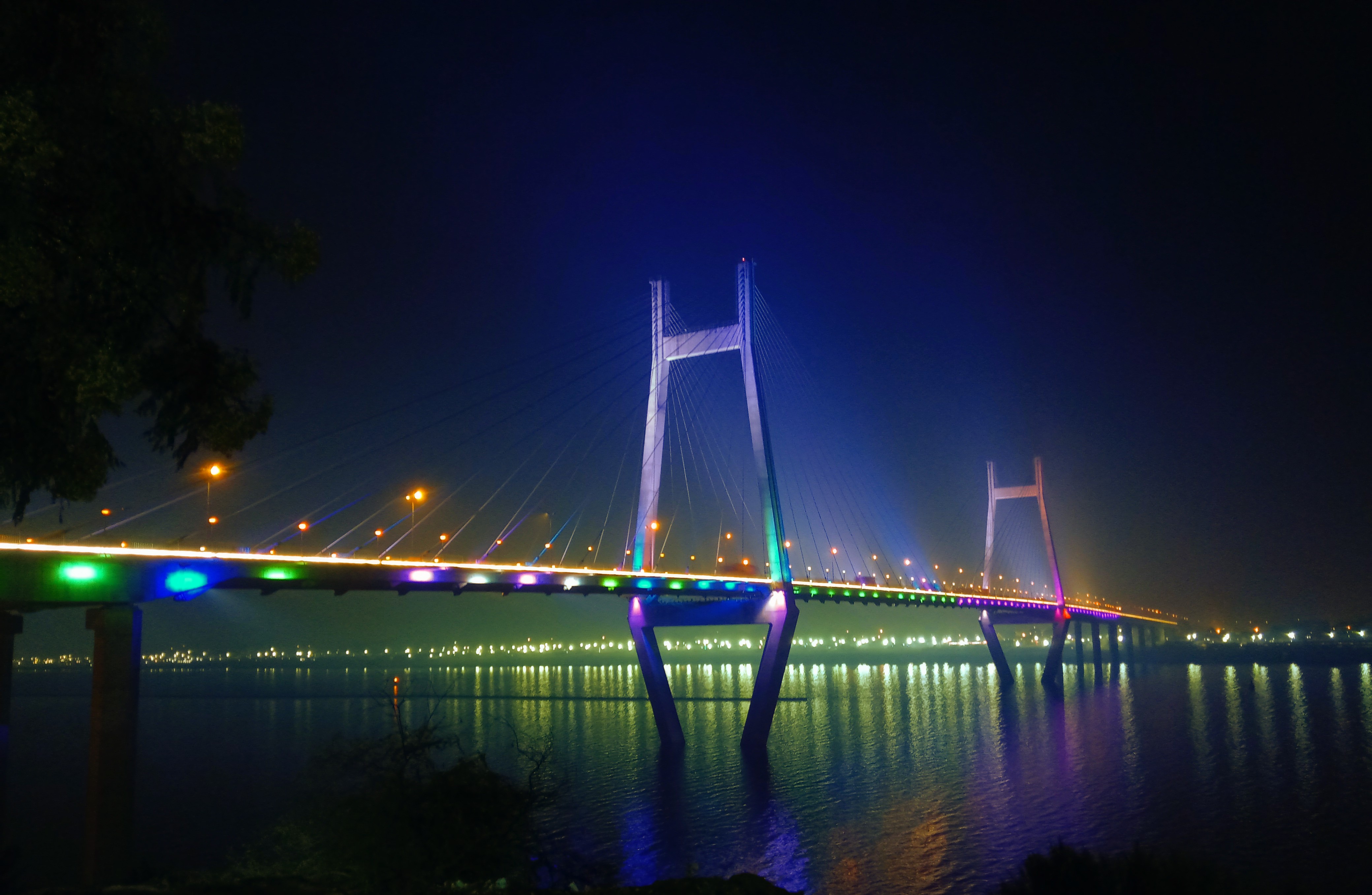
Located at the confluence of the Ganges, Yamuna, and Saraswati rivers, Prayagraj is a city steeped in spiritual significance. The Kumbh Mela, held here every 12 years, attracts millions of devotees worldwide. First, visit the iconic Triveni Sangam, where the three rivers merge, and take a boat ride to witness the mesmerizing spectacle. Then, explore the grand Allahabad Fort and immerse yourself in the historical legacy of this ancient city.
5. Mathura and Vrindavan: The Land of Lord Krishna

Embark on a pilgrimage to Mathura and Vrindavan, the birthplace and childhood abode of Lord Krishna. Mathura’s narrow lanes resonate with the vibrant celebrations of Holi,
where the festival of colors reaches its zenith. Immerse yourself in the spiritual aura as you visit ancient temples, including the revered Krishna Janmabhoomi Temple. In Vrindavan, witness the enchanting Rasleela dance and explore the countless temples dedicated to Lord Krishna and his beloved Radha.
6. Sarnath: The Serene Land of Buddha’s First Sermon
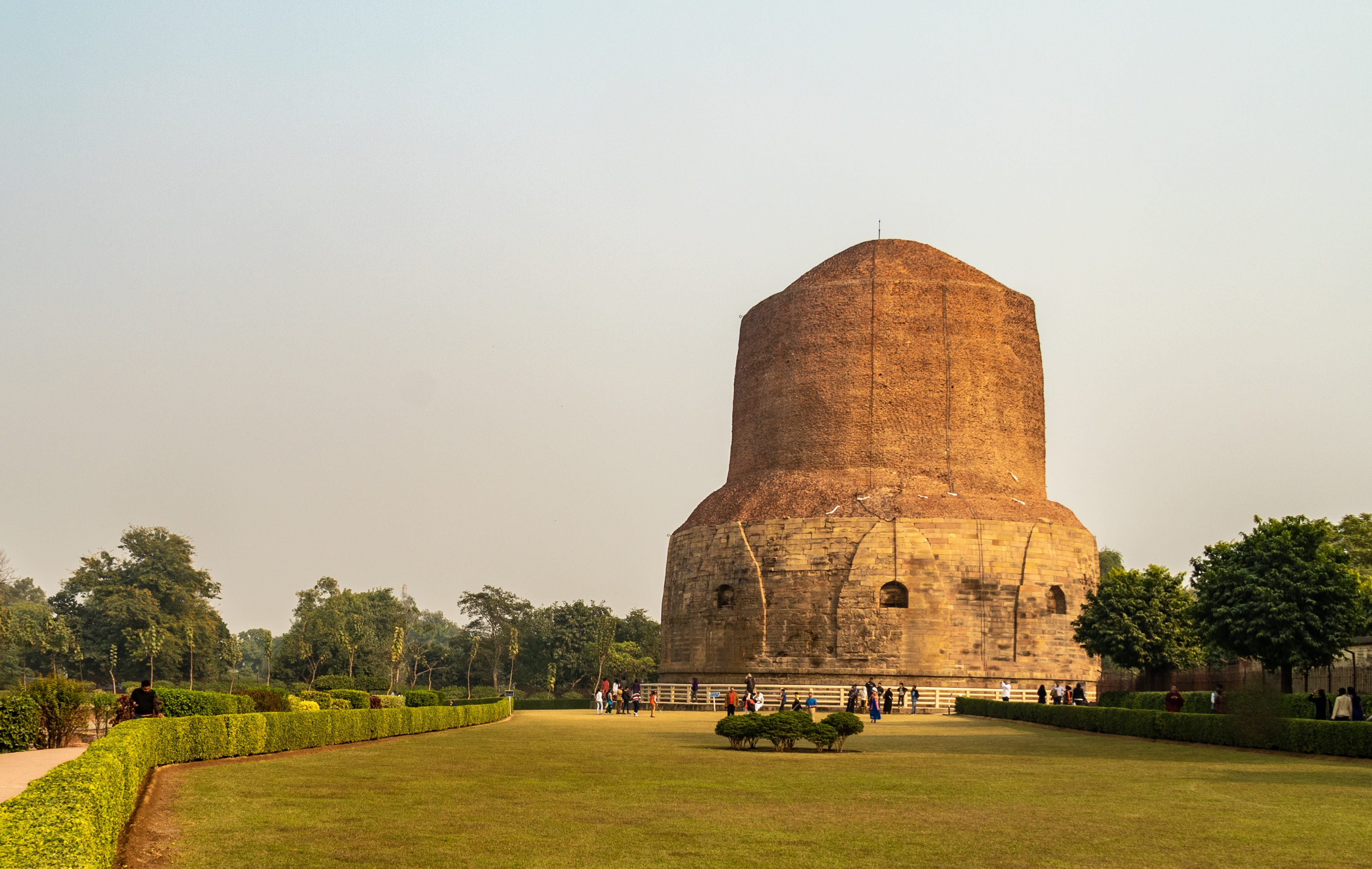
Sarnath is a serene land that holds immense significance in Buddhism. It is where Lord Buddha, the founder of Buddhism, delivered his first sermon after enlightenment. Sarnath is considered one of the four holy sites associated with the life of Buddha and is revered by Buddhists from around the world.
As per Buddhist tradition, it was in Sarnath that Lord Buddha set in motion the Wheel of Dharma (Dharmachakra) by preaching the principles of the Four Noble Truths and the Eightfold Path to his five disciples. This event, known as the “Dharmachakra Pravartan” or the “Turning of the Wheel of Dharma,” marked the beginning of Buddha’s teachings and the spread of Buddhism.
Sarnath is home to several significant Buddhist monuments and sites that attract pilgrims and tourists seeking spiritual solace. The most prominent among them is the Dhamek Stupa, a massive cylindrical structure that symbolizes Buddha’s teachings. It is believed to mark the exact spot where Lord Buddha delivered his first sermon. The stupa is adorned with intricate carvings and inscriptions, reflecting the rich artistic heritage of ancient India.
Another important site in Sarnath is the Mulagandhakuti Vihara, a modern monastery constructed by the Mahabodhi Society. It is located near the ruins of the ancient monastery where Lord Buddha is said to have resided during his visits to Sarnath. The Mulagandhakuti Vihara houses a beautiful golden statue of Lord Buddha and serves as a place of meditation and religious study.
The Sarnath Archaeological Museum is a treasure trove of ancient artifacts and sculptures that provide insights into the history and artistry of the region. In addition, the museum displays a remarkable collection of Buddhist relics, including the famous Ashoka Pillar, adorned with four lions, which has become a symbol of the Republic of India.
Sarnath’s spiritual ambiance extends beyond Buddhism, as the city is also associated with Jainism. The Jain temple in Sarnath is dedicated to the 11th Tirthankara, Shri Shreyansanath Bhagwan. Devotees visit the temple to seek blessings and pay homage to the Jain spiritual traditions.
Visiting Sarnath offers a serene and contemplative experience. The tranquil surroundings, coupled with the historical and spiritual significance of the place, create an atmosphere of introspection and peace. Whether you are a Buddhist devotee or a seeker of spiritual enlightenment, Sarnath offers a sacred space to connect with the teachings of Lord Buddha and find solace in the wisdom and compassion he shared with the world.
7. Kushinagar: The Place of Lord Buddha’s Mahaparinirvana
Journey to the serene town of Kushinagar, where Lord Buddha attained Mahaparinirvana, his final enlightenment. This sacred site has stupas, monasteries, and the iconic Mahaparinirvana Temple. Pay your respects to the reclining Buddha statue, which is a poignant reminder of the impermanence of life. Kushinagar offers a serene and reflective atmosphere, allowing visitors to connect with their inner selves.
8. Ayodhya: The Birthplace of Lord Rama

Ayodhya is a city steeped in religious and cultural significance. It is renowned as the birthplace of Lord Rama, a revered deity in Hinduism. Ayodhya holds a special place in the hearts of millions of devotees who visit the city to seek blessings and pay homage to Lord Rama.
According to Hindu mythology, Ayodhya is believed to have been the capital of the ancient kingdom of Kosala, where Lord Rama was born as the seventh avatar of Lord Vishnu. The epic Ramayana, which chronicles the life and adventures of Lord Rama, adds to the city’s spiritual and historical importance.
One of the most sacred sites in Ayodhya is the Ram Janmabhoomi, the birthplace of Lord Rama. The site has been a focal point of devotion and controversy for centuries. It was believed to have housed an ancient temple dedicated to Lord Rama, which was destroyed and replaced by a mosque in the 16th century. In recent years, efforts have been made to construct a grand temple at the Ram Janmabhoomi, reflecting the deep reverence held by devotees.
Ayodhya is dotted with numerous temples and religious sites that attract pilgrims from all over the world. The Hanuman Garhi Temple is one of the most prominent temples in the city. It is dedicated to Lord Hanuman, the devoted disciple of Lord Rama, and is situated on a hilltop. The temple offers panoramic city views and is an important pilgrimage site for Lord Hanuman’s devotees.
Another important site is the Kanak Bhawan, a temple dedicated to Lord Rama and his consort Sita. It is believed to be the palace gifted to Sita by Lord Rama’s stepmother, Kaikeyi, adorned with beautiful paintings and sculptures depicting scenes from the Ramayana.
Ayodhya is a city of religious importance and a cultural heritage repository. The town showcases a unique blend of architecture, music, and art influenced by various dynasties that ruled over it. The Ayodhya Art Gallery displays exquisite artwork and artifacts related to Lord Rama and the Ramayana, providing a glimpse into the city’s rich artistic heritage.
The city of Ayodhya comes alive during festivals, especially during Diwali, the festival of lights, which holds immense significance in the Ramayana. The city is adorned with colorful lights, and devotees celebrate Lord Rama’s return to Ayodhya after his victory over the demon king Ravana.
Visiting Ayodhya offers a spiritual and cultural experience, allowing devotees and visitors to connect with the divine and immerse themselves in the stories and teachings of Lord Rama. The city’s tranquil ambiance and deep-rooted religious heritage create an atmosphere of reverence and devotion. Ayodhya serves as a beacon of faith, drawing people from various walks of life who seek solace and enlightenment in the divine presence of Lord Rama.
9. Jhansi: Unraveling the Tale of Courage and Sacrifice

Jhansi, a historic city, unravels a tale of courage and sacrifice that has left an indelible mark on India’s history. Known for its rich heritage and valorous past, Jhansi is a place that resonates with stories of bravery and resilience.
The city gained prominence during the Indian Rebellion of 1857, also known as the First War of Independence. Rani Lakshmibai, the queen of the princely state of Jhansi, emerged as a prominent figure during this uprising. She fiercely led her army against the British East India Company, symbolizing the spirit of defiance and the fight for freedom.
The story of Rani Lakshmibai’s bravery and sacrifice is deeply intertwined with the history of Jhansi. Despite facing numerous challenges and overwhelming odds, she fearlessly defended her kingdom and became a symbol of resistance against colonial rule. Her unwavering courage has inspired generations and earned her the “Jhansi Ki Rani” (Queen of Jhansi).
Jhansi Fort, a historic stronghold atop a hill, is a testament to the city’s glorious past. Rani Lakshmibai made her last stand against the British force within these fortifications. Exploring the fort allows visitors to delve into the pages of history and witness the remnants of the valiant queen’s defiance.
Apart from Jhansi Fort, the city has several other landmarks that glimpse its historical legacy. For example, the Rani Mahal, known as the Queen’s Palace, showcases a blend of Rajput and Mughal architectural styles. It served as the residence of Rani Lakshmibai and now houses a museum that exhibits artifacts and relics from the era.
The Jhansi Museum is another significant attraction, providing an insight into the city’s history and the heroic tales associated with Rani Lakshmibai. The museum displays an impressive collection of weapons, paintings, sculptures, and historical documents that bring the past to life.
Jhansi is not just a city of historical importance; it is also a thriving cultural hub. The people of Jhansi take pride in their traditions and enthusiastically celebrate various festivals. In addition, the city is known for its vibrant folk music and dance forms, which reflect the region’s rich cultural heritage.
Visiting Jhansi offers a unique opportunity to witness the courageous spirit of its past and pay homage to the indomitable courage of Rani Lakshmibai. The city stands as a reminder of the sacrifices made by countless individuals in the struggle for independence. It serves as an inspiration and a reminder that pursuing freedom requires unwavering determination and an unyielding spirit.
10. Dudhwa National Park: A Wilderness Paradise
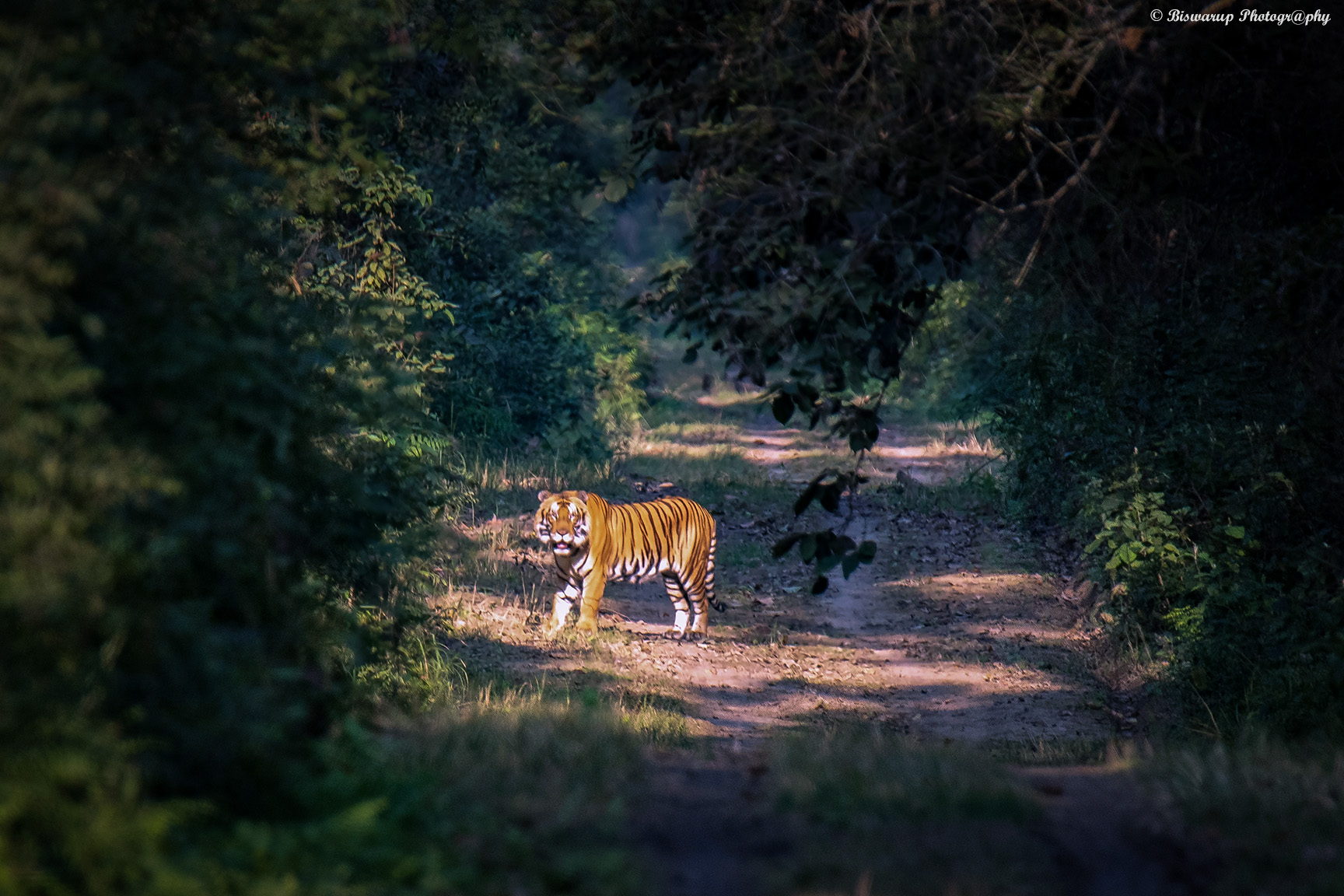
Dudhwa National Park is a true wilderness paradise that offers a unique and captivating wildlife experience. Spread across the Terai region, the park is renowned for its rich biodiversity and pristine natural beauty. It was established in 1977 and is one of the important protected areas in India.
The park’s landscape is a mosaic of dense forests, marshes, grasslands, and rivers, providing a diverse habitat for various animal and plant species. Dudhwa National Park is particularly famous for its majestic Royal Bengal Tiger population and the elusive Indian one-horned rhinoceros. It is one of the few remaining strongholds of these endangered species.
Embarking on a safari in Dudhwa National Park offers an exciting opportunity to spot these magnificent creatures in their natural habitat. As you traverse the park’s rugged terrain, you may encounter other iconic wildlife species, such as Indian elephants, leopards, swamp deer, hog deer, sloth bears, and wild boars. The park is also a haven for birdwatchers, with over 450 species of resident and migratory birds, including the Bengal florican, sarus crane, and several species of vultures.
Several rivers and streams support the park’s diverse ecosystems, including the Suheli and Mohana, which meander through the park’s lush forests. The tranquil lakes and marshes attract water birds, adding to the park’s avian richness. Dudhwa National Park is also home to numerous reptiles, amphibians, and insect species, contributing to the overall biodiversity of the region.
Apart from its wildlife, Dudhwa National Park offers breathtaking natural landscapes. The dense Sal forests, interspersed with open grasslands, create a captivating environment. The park’s tranquil ambiance and the melodious sounds of nature make it an ideal destination for nature enthusiasts and photographers.
Conservation efforts in Dudhwa National Park have played a vital role in preserving its fragile ecosystem. The park authorities work tirelessly to protect the flora and fauna, ensure sustainable tourism practices, and raise awareness about the importance of wildlife conservation.
Visiting Dudhwa National Park allows you to disconnect from the chaos of urban life and immerse yourself in the pristine wilderness. Whether you’re an avid wildlife enthusiast, a nature lover, or simply seeking a serene getaway, Dudhwa National Park offers an unforgettable experience filled with adventure, tranquility, and a deep connection with nature’s wonders.
11. Chitrakoot: The Land of Tranquil Natural Beauty

Chitrakoot, often called the “Land of Tranquil Natural Beauty,” is a picturesque town Situated on the banks of the Mandakini River; it holds immense religious and cultural significance in Hindu mythology. Chitrakoot is believed to be where Lord Rama, his wife Sita, and his loyal brother Lakshmana spent their exile years.
The town has breathtaking natural beauty, lush green forests, rolling hills, and cascading waterfalls. The Vindhya mountain range surrounds it, adding to its serene ambiance. Chitrakoot is a famous Hindu pilgrimage site, attracting devotees from all over the country.
One of the major attractions in Chitrakoot is the Ram Ghat, a sacred bathing ghat on the banks of the Mandakini River. Devotees gather here to take a holy dip in the river, believing it to cleanse their sins and bring spiritual purification. The ghat is beautifully adorned with temples dedicated to Lord Rama, Sita, and other deities.
Another important site in Chitrakoot is Kamadgiri Mountain. It is believed to embody Lord Rama and is considered highly sacred. Pilgrims often circumambulate the mountain, seeking blessings and offering prayers. Dense forests surround the hill, providing a tranquil environment for meditation and introspection.
Chitrakoot is also home to numerous ancient temples and religious sites. The Bharat Milap Temple is a revered shrine that commemorates the reunion of Lord Rama and his brother Bharata. The Hanuman Dhara Temple is dedicated to Lord Hanuman and is perched on a hilltop, offering panoramic views of the surrounding landscape.
Apart from its religious significance, Chitrakoot is a nature lover’s paradise. The town has several scenic spots like the Gupt Godavari Caves, where the Mandakini River disappears into the earth and re-emerges as two streams. Also, the Marpha Waterfalls, located in dense forests, provide a soothing retreat with cascading waters and serene surroundings.
Chitrakoot has inspired many poets and writers throughout history, and its tranquil beauty continues to captivate visitors. It offers a perfect blend of spirituality, natural splendor, and a peaceful atmosphere. So whether you are seeking religious solace or want to immerse yourself in the lap of nature, Chitrakoot is a destination that promises a truly enriching experience.
12. Shravasti: Witnessing the Miracles of Lord Buddha

Step into the ancient city of Shravasti, where Lord Buddha performed numerous miracles and preached his teachings. Visit the Jetavana Monastery, an architectural marvel that served as a residence for Lord Buddha. Explore the ruins of the ancient city and marvel at the remnants of its glorious past. Shravasti offers a glimpse into the life and teachings of Lord Buddha, transporting visitors to a bygone era of enlightenment.
13. Naimisharanya: The Sacred Grove of Vedic Lore
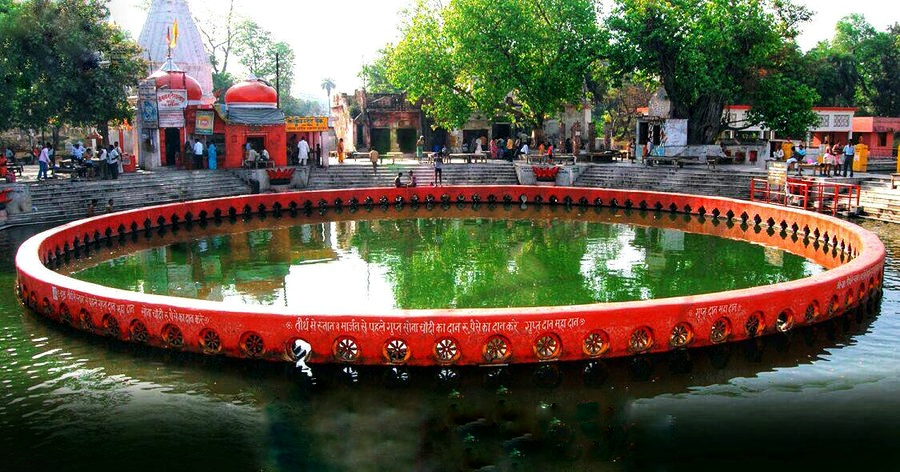
Uncover the mystical aura of Naimisharanya, a sacred grove mentioned in ancient Hindu scriptures. This serene place is believed to be the abode of Lord Vishnu in his form as Lord Krishna. Next, explore the revered Chakra Tirtha, where Lord Krishna is said to have narrated the Puranas. Finally, pay homage at the Lalita Devi Temple, dedicated to the divine mother, and experience the profound peace that permeates the air.
14. Fatehpur Sikri: Beyond the Time

Fatehpur Sikri is a historical city in Agra. It was built by Emperor Akbar in the late 16th century and served as the capital of the Mughal Empire for a short period. The city is renowned for its magnificent architecture and is now a UNESCO World Heritage Site.
Emperor Akbar founded Fatehpur Sikri in 1569 when he decided to construct a grand capital near the Sikri village. The city was strategically located and served as a symbol of Akbar’s power and influence. It was designed to reflect the ideals of the Mughal Empire and incorporated elements of Persian, Hindu, and Islamic architectural styles.
The city boasts several impressive structures, including the Buland Darwaza, the main entrance to the town. It is a massive gateway made of red sandstone and stands at a height of 54 meters. The Buland Darwaza is considered one of the highest gateways in the world and is adorned with intricate carvings and decorative elements.
Another notable structure in Fatehpur Sikri is the Jama Masjid, a grand mosque built to accommodate large congregations. It features a central courtyard, ornate domes, and elegant pillars. The mosque showcases the rich craftsmanship of the Mughal period.
The Diwan-i-Khas, or the Hall of Private Audience, is another architectural marvel in Fatehpur Sikri. This building served as a private chamber for Emperor Akbar, where he held discussions with his courtiers and advisors. It is famous for its intricately carved columns and the unique throne pillar known as the Panch Mahal.
Fatehpur Sikri is known for its palaces, religious structures, beautiful gardens, and water features. The Panch Mahal is a five-story pavilion surrounded by lush gardens that provides a panoramic view of the city. The Anup Talao, a reservoir near the Diwan-i-Khas, is known for its exquisite architecture and is believed to have been used for musical performances during Akbar’s reign.
Despite its grandeur, Fatehpur Sikri was abandoned shortly after its completion due to water scarcity. However, its architectural splendor continues to attract tourists from around the world. Visitors can explore the well-preserved structures and immerse themselves in the rich history and culture of the Mughal Empire.
15. Mirzapur: Not Like Webseries
Mirzapur is a city situated in the eastern part of the state, along the banks of the Ganges River. Mirzapur has a rich history, cultural heritage, and scenic beauty.
The city of Mirzapur has a long and illustrious past, dating back to ancient times. It was an important center of trade and commerce during the medieval period and was ruled by various dynasties, including the Mughals and the British.
Mirzapur is famous for its carpet industry, producing intricate hand-woven carpets exported worldwide. The city is also known for its brassware, pottery, and wooden handicrafts. In addition, it is a hub for traditional art and craft forms.
In terms of attractions, Mirzapur offers several places of interest for visitors. Vindhyachal, located near Mirzapur, is a popular pilgrimage site and is believed to be the abode of the Hindu goddess Durga. The Vindhyavasini Devi Temple attracts a large number of devotees throughout the year.
Another noteworthy attraction is the Chunar Fort, situated on the banks of the Ganges River. This ancient fort has a rich history and offers panoramic views of the surrounding areas. Other places of interest include the Sita Kund, Wyndham Fall, and the Ghanta Ghar clock tower.
Mirzapur has gained additional popularity in recent years due to the Indian web series “Mirzapur,” which has brought the city into the spotlight. However, it’s important to note that the events depicted in the series are fictional and not representative of the actual city of Mirzapur.
Overall, Mirzapur is a city that combines history, culture, and natural beauty, making it an intriguing destination for tourists and a significant center of commerce and craftsmanship in India.
Places to Visit in Uttar Pradesh FAQs (Frequently Asked Questions)
How many days should I allocate to explore Uttar Pradesh?
Ideally, you should plan a trip of at least 7-10 days to cover the major attractions of Uttar Pradesh. However, if you have limited time, prioritize the places based on your interests and allocate a minimum of 3-4 days.
What is the best time to visit Uttar Pradesh?
The best time to visit Uttar Pradesh is during the winter, from October to March when the weather is pleasant and ideal for exploring the attractions. However, each season has its charm, so plan accordingly based on your preferences.
How can I reach Uttar Pradesh?
Uttar Pradesh is well-connected by air, rail, and road. The state’s major airports are Lucknow, Varanasi, and Agra. The state also has an extensive rail network with several essential junctions. In addition, national highways connect Uttar Pradesh to neighboring states.
Are there any accommodation options near the tourist attractions?
Yes, numerous accommodation options are available near the tourist attractions in Uttar Pradesh. From budget hotels to luxury resorts, you’ll find a range of choices to suit your preferences and budget.
Is it safe to travel to Uttar Pradesh?
Like any other travel destination, taking precautions while traveling in Uttar Pradesh is essential. Be mindful of your belongings, follow local customs and traditions, and avoid venturing into isolated areas at odd hours. Traveling with a trusted guide or getting help from provincial tourism authorities is advisable.
Are there any culinary specialties to try in Uttar Pradesh?
Uttar Pradesh is renowned for its delectable cuisine. Don’t miss the opportunity to savor mouthwatering dishes like kebabs, biryanis, chaat, and sweets like petha and jalebi. Awadhi cuisine, with rich flavors and aromatic spices, is a culinary delight you must indulge in during your visit.
Places to Visit in Uttar Pradesh: Conclusion
With its treasure trove of historical, spiritual, and natural wonders, Uttar Pradesh offers a captivating journey that will leave an indelible mark on your soul. From Varanasi’s spiritual serenity to the Taj Mahal’s majestic allure, each place has a story and experience. So embark on this enchanting adventure through the 15 places to visit in Uttar Pradesh, and let the beauty and grandeur of this region unravel before your eyes.







